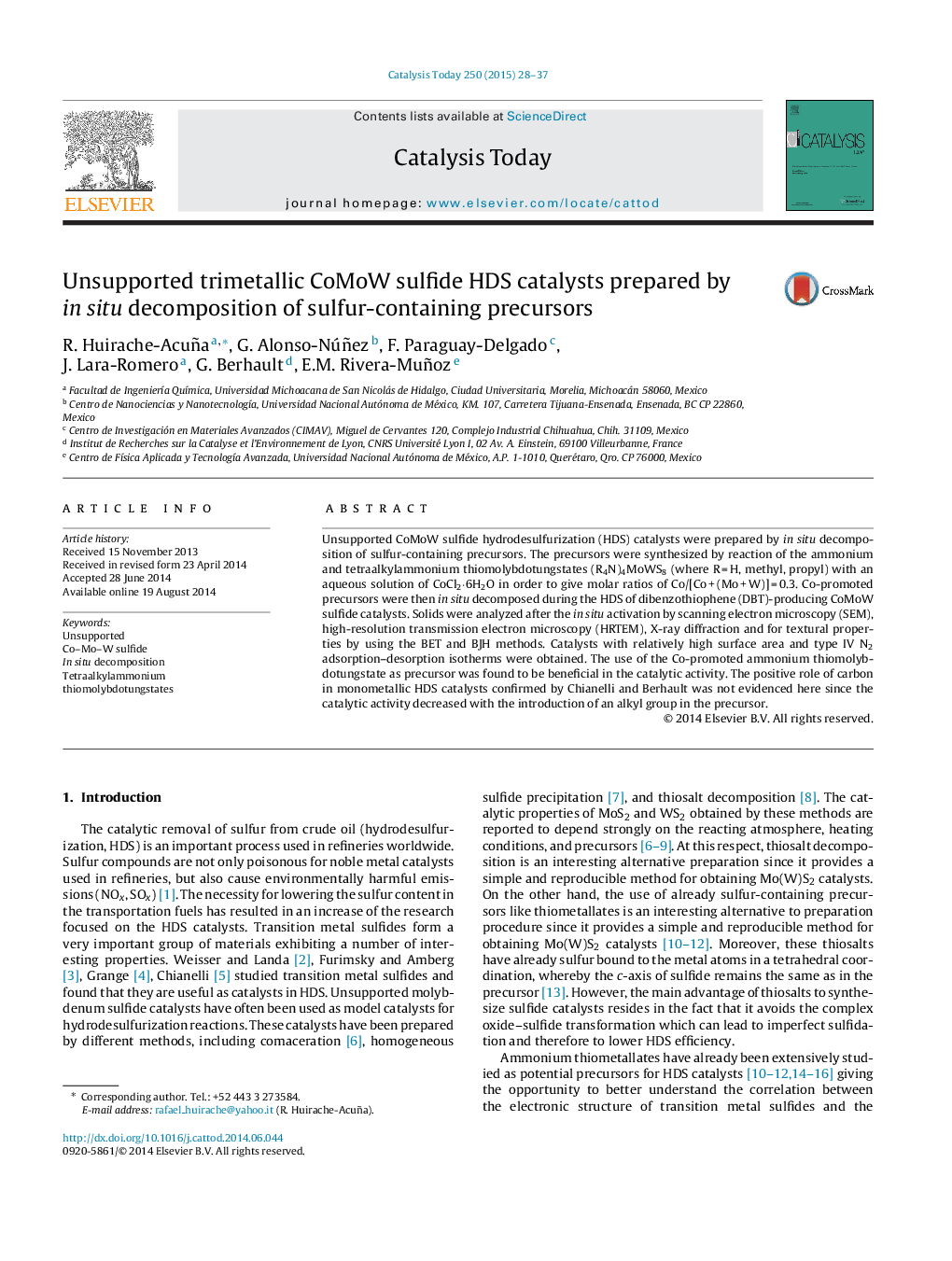| Article ID | Journal | Published Year | Pages | File Type |
|---|---|---|---|---|
| 53914 | Catalysis Today | 2015 | 10 Pages |
•Unsupported CoMoW sulfide HDS catalysts were prepared by in situ decomposition of sulfur-containing precursors.•The nature of alkyl group affects the specific surface area, structure and results in HDS activity.•The best catalyst was synthesized from ammonium thiosalts of Mo and W without alkyl chain.•The use of tetraalkylammonium thiomolybdotungstate precursors decreases the HDS activity.
Unsupported CoMoW sulfide hydrodesulfurization (HDS) catalysts were prepared by in situ decomposition of sulfur-containing precursors. The precursors were synthesized by reaction of the ammonium and tetraalkylammonium thiomolybdotungstates (R4N)4MoWS8 (where R = H, methyl, propyl) with an aqueous solution of CoCl2·6H2O in order to give molar ratios of Co/[Co + (Mo + W)] = 0.3. Co-promoted precursors were then in situ decomposed during the HDS of dibenzothiophene (DBT)-producing CoMoW sulfide catalysts. Solids were analyzed after the in situ activation by scanning electron microscopy (SEM), high-resolution transmission electron microscopy (HRTEM), X-ray diffraction and for textural properties by using the BET and BJH methods. Catalysts with relatively high surface area and type IV N2 adsorption–desorption isotherms were obtained. The use of the Co-promoted ammonium thiomolybdotungstate as precursor was found to be beneficial in the catalytic activity. The positive role of carbon in monometallic HDS catalysts confirmed by Chianelli and Berhault was not evidenced here since the catalytic activity decreased with the introduction of an alkyl group in the precursor.
Graphical abstractFigure optionsDownload full-size imageDownload high-quality image (140 K)Download as PowerPoint slide
